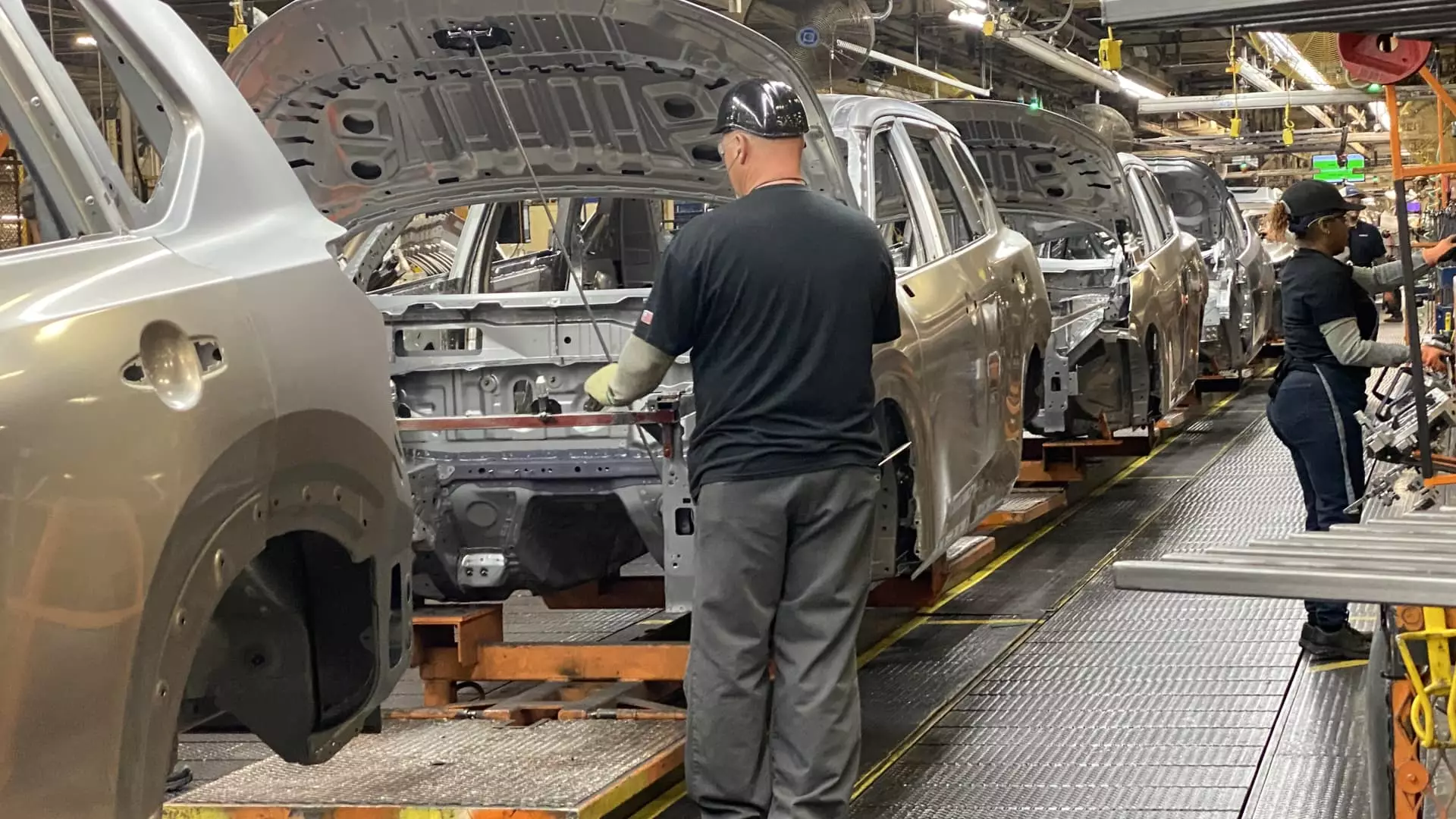As President Donald Trump’s punitive 25% tariffs on imported vehicles continue to affect the market, the automotive industry stands on the brink of an unprecedented shift. Analysts are ringing the alarm bells, expecting that these policies will unleash detrimental ripple effects throughout the global automotive sector. From plummeting vehicle sales to skyrocketing prices, the implications are not merely theoretical; they are a ticking time bomb waiting to detonate. As a center-right liberal, it’s hard not to criticize these ill-conceived tariffs that promise to strangle both consumer choice and economic vitality.
The reality is sobering: projections suggest a staggering drop of at least 2 million vehicles sold annually across the U.S. and Canada. This isn’t just a numerical hiccup; it represents a broader economic malaise rooted in misguided policy. The Center for Automotive Research in Michigan anticipates costs for U.S. automakers will swell by an eye-popping $107.7 billion, including a hefty share from leading domestic manufacturers like General Motors and Ford. How exactly did we get to this point? The answer lies in an administration keen on playing hardball at the expense of sustainable growth and innovation in the automotive space.
An Industry in Crisis: The Consumer Cost of Protectionism
The implications of these tariffs extend beyond just the manufacturers. The heart-wrenching truth is that they will inevitably be passed onto the consumer. With new vehicle prices already teetering around an average of $50,000, making a car purchase has transformed from a rite of passage into a financial burden. Goldman Sachs forecasts that net prices on new vehicles will escalate by $2,000 to $4,000 over the next year, a cost burden many consumers can ill afford amidst overarching inflationary pressures.
With the average auto loan interest rate hovering above 9.64%, the prospect of purchasing a vehicle can feel overwhelmingly bleak. It seems as though middle-class families are caught in a vise—not only facing exorbitant prices, but also grappling with escalating interest rates. Is it any wonder that consumer sentiment is dismal? The latest University of Michigan survey exposed that inflation levels have reached their peak since 1981, exacerbating financial anxieties and stifling spending power. When the price of transportation becomes a luxury rather than a necessity, we must ask ourselves: who benefits from this punitive approach?
An Ill-Fated Response: Automakers Grapple with Dilemma
The responses from automotive manufacturers to these tariffs have been varied, yet the underlying theme remains clear: adaptation. Companies like Ford and Stellantis have resorted to offering employee pricing deals in a desperate bid to stimulate purchasing amid declining consumer confidence. Meanwhile, foreign manufacturers such as Jaguar Land Rover have halted shipments to the United States altogether, signaling that the ramifications of these tariffs extend far beyond domestic borders.
Importantly, while some manufacturers are engaging in strategies to mitigate the negative consumer impact, the question arises: for how long can these patches last? Analysts believe that it won’t be long before these tariffs begin to take root in production practices. Automakers face a precarious balancing act between sustaining market share and managing rising production costs due to the tariffs on essential automotive parts, set to take effect soon.
The Irony of Protectionism: Job Security at Risk
It is almost an ironic twist of fate that policies intended to protect American jobs could ironically jeopardize them instead. As costs mount, manufacturers may inevitably resort to layoffs or cutbacks in production, sparking concern that long-term job security in the automotive sector is more tenuous than ever. The tariffs were ostensibly designed to safeguard American jobs, yet they unwittingly contribute to a landscape where layoffs and plant closures become a grim reality.
The automotive industry has long been a pillar of economic strength in the U.S. Even amid challenges from foreign competitors and market volatility, American automakers have demonstrated the capacity for resilience and innovation. However, these tariffs introduce structural changes that could thwart the American auto sector’s competitive edge. Firms will be forced to rethink their operational strategies, potentially undermining their very foundation.
A Forward-Looking Approach: Innovation Over Protection
In an era where innovation must be the crux of economic competitiveness, resorting to protectionist measures seems counterintuitive. Instead of erecting tariffs that only serve to widen the chasm between consumers and their reality, it would be more beneficial for policymakers to engage in strategies that foster growth through innovation and investment. Reducing regulatory burdens, promoting research and development, and encouraging skill acquisition for workers can catalyze a renaissance in the automotive landscape.
The automotive industry is at a pivotal juncture where it can either embrace change or succumb to the inertia of outdated policies. As we witness the fallout from Trump’s tariffs unfurling, it is imperative to pivot towards a future where collaboration, creativity, and market-driven solutions reign. The path ahead necessitates an acknowledgment that, ultimately, economic vitality hinges not on isolationism, but rather on the democratic interplay of competition and collaboration.

